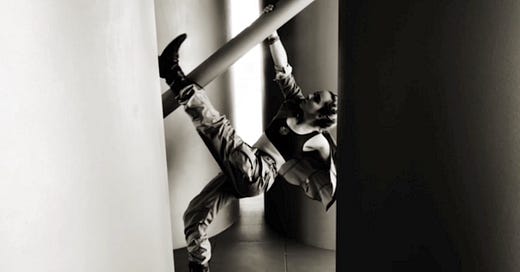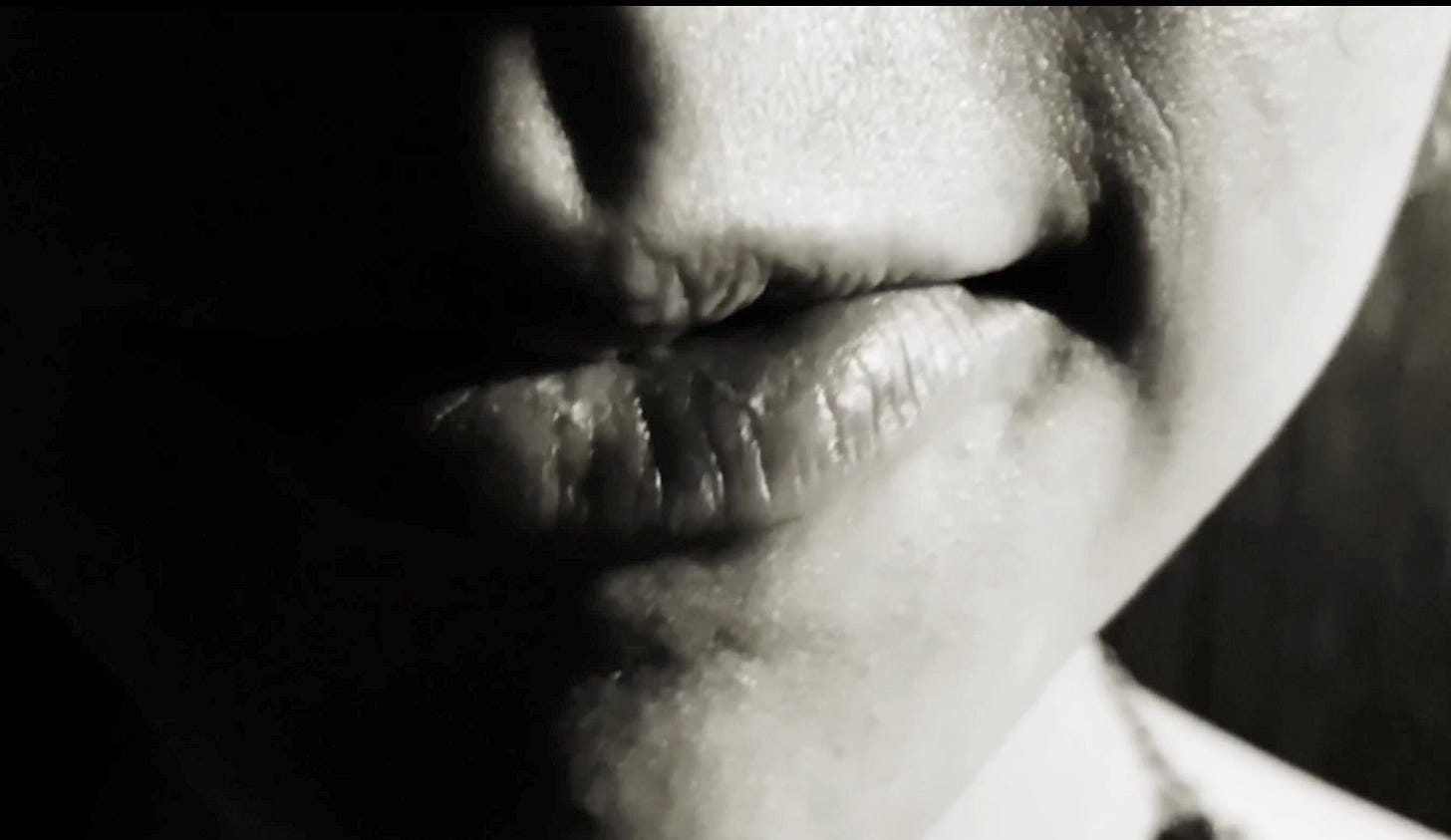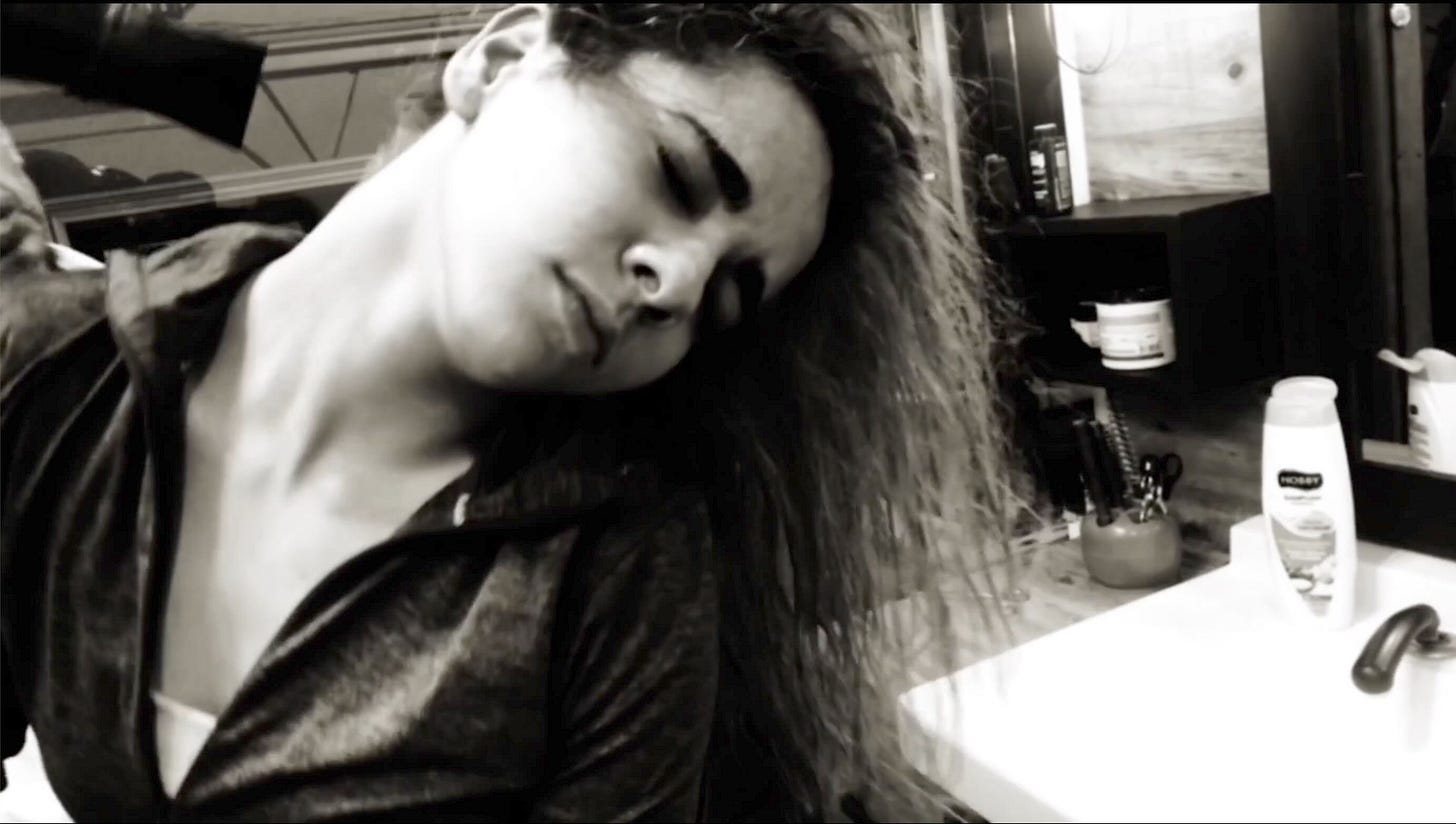Zarafe is an engrossing feature-length film, part documentary, part dance film. Directed by Mircea Sorin Albuțiu, Zarafe immerses us in the world and work of Iranian dancer Zahra Raeisolsadat, 20 years old at the time of filming. Instead of the interviews and commentary one would find in a conventional documentary, Albuțiu follows Raeisolsadat through both Tehran and Istanbul, and we see her spontaneous, improvised dance explorations of streets, public buildings, and private spaces. The film unfolds as a series of extraordinary dances, and these dances tell the story of Raeisolsadat in choreographic form, physically embodying her artistic development, her struggles with the restrictions imposed by the Islamic Republic on young women, and her relentless quest for re-inventing herself. A jazz-inflected musical score, improvised in response to her movement, is by Hesam Kardan.
The film’s narration is a poetic text, recited by Raeisolsadat. She asserts her elusive, undefinable nature: “Neither Christian, nor Jew, nor Magian, nor Muslim…nor of the land, nor of the sea…” Defying categorization, she implicitly rejects partisan thinking of all kinds. The text is credited to both Raeisolsadat and Raluca Boantă.
Albuțiu’s black and white videography emphasizes the tactility with which Raeisolsadat approaches the world: surfing between light and shadows. “Somewhere between black and white, watching death and life, I try to dance.” Occasionally, he flips the image into the negative, the strangeness of a world with glowing white shadows emphasizing the dream, the ecstasy, the altered state which is the goal of her art. “Outside of drunkenness and revelry, I have no tale to tell,” she says.
Albuțiu often shoots her in extreme close-up. While she speaks, he zooms in on her chin, her throat. This intimacy almost places us inside her skin. Watching the movement of her neck and her lips, we experience speech as a physical act, part of her endless expression of herself through the body, and her poetry soon shifts seamlessly into dancing. At the end of the film, we see her riding in a car through the streets of Tehran, with her hand sticking out of the open window, her fingers relentlessly exploring, dancing. Dance is so deeply a part of her way of being in the world, that her ordinary, everyday movements turn into dances, throughout the day, at a moment’s notice.
Her focus on improvisation and on dancing in public is another strategy by which she erases the distinction between art and life. An ordinary stroll down a busy street in Istanbul evolves naturally into a dance sequence. Her uncovered hair and her eccentric movements certainly do not cause the same kind of disturbance in Istanbul that they do in Tehran. Her visit to Istanbul, and her connection to a community of artists and friends there, is a vital life-line for her, a vision of the kind of free life which she is fighting for at home.
With her black combat boots, short black sleeveless top and bare midriff, she would be at home on the street (or on stage in a post-modern dance program) in New York, but in Tehran, dancing in the (empty) lobby of a public building, she is breaking the law by appearing dressed in this way. For that matter, dancing in public is itself a crime, and her spontaneous performances, like her choice of costume, are acts of civil disobedience.
She lives under a regime that classifies women’s bodies, women’s hair, as something so overwhelmingly dangerous in their allure that they must be policed and contained under threat of violence. Inevitably, her body and hair become weapons, erotic threats that can bring down the system by their mere existence. On the other hand, her dancing doesn’t dwell on erotic gestures. Her improvisations among the pillars and staircases of modern, brutalist architecture are primarily explorations of space and volume, and of shifting personal impulse. Raeisolsadat follows an inner dialog of passion, boredom, sensory awareness, responses to the shifting light, spontaneously tracing her physical response to the site with same freedom and intent as I’ve been watching from American post-modern dancers since the 1970s. Her dancing is the expression of a woman with many and varied impulses, quite apart from the erotic, and is an artistic refusal of the regime’s reductive concept of women.
In a striking sequence, shot in a video installation inside an Istanbul museum, Raeisolsadat is surrounded by swirling forms, a video texture which recreates the flow of the Bosphorus river. Her dance takes her spiraling down into the floor, her whirling arms and legs caught in the visual vortex, responding with every muscle to the watery flow. This devotee of transformation seems perfectly at home here, in her element, dancing inside of the ever-shifting fluid textures. Albuțiu, as well, is at home, and his remarkably intuitive camerawork is perfectly in sync with her motions, as they dance together among the digital waves.
In a another unusual sequence, Raeisolsadat is at a salon, while the (male) hairdresser (Davut Keleș) shampoos and blow-dries her hair, collaboratively turning this mundane activity into a dance, their movements veering between the practical and a sensual exploration of tactile experience. Their dance with a hand-held dryer becomes a swoon in a wind-storm.
Raeisolsadat has long, luxurious hair, dyed blond, but she decides to cut it. Her primary motivation for cutting her hair seems to be that she deeply loves it. She spends hours caressing and brushing it, staring at it in the mirror. Her dances are characterized by her sensual pleasure in allowing her hair to flare around her shoulders. “Metamorphosis is my religion,” she says, and she means it. For Raeisolsadat, to change is to live. Her commitment to metamorphosis demands that she lets go of what she is most attached to; this is the only way to ensure that her transformation will be deep, fundamental. It’s not easy; she cries as the locks fall.
The film culminates in a dance of rebirth, the new, short-haired Raeisolsadat waving the locks of her hair, her old self, around her like victory flags. The remarkable dance that follows is unlike any other she does in the film: fluid, assured, inevitable, with an almost mythic solemnity. Her stumblings, hesitations, conflict and self-doubt are all gone, as the waves of her re-born self pass through her body. (She dances topless, still in her apartment.) A wild self emerges, ancient and modern at once.
An epilog to the film is entitled “Is it ok if I don’t have any conclusion?” For Raeisolsadat, everything is about exploration, discovery, transformation. She is interested in questions, not in pinning reality down with answers. For her, not having a definitive conclusion is the conclusion.
By building his documentary around Raeisolsadat’s dancing rather than analysis and discussion, Albuțiu honors an art form in which the expression of the body is paramount. For Raeisolsadat, dancing is living, and the film immerses us equally in her process, her artistic sophistication, and her phenomenal courage. It’s an experience which is both breathtaking and inspiring.
My articles on experimental film are freely available to all, but are supported by monthly and annual donations from readers. Please consider becoming a paid subscriber to support my work. Thank you.








